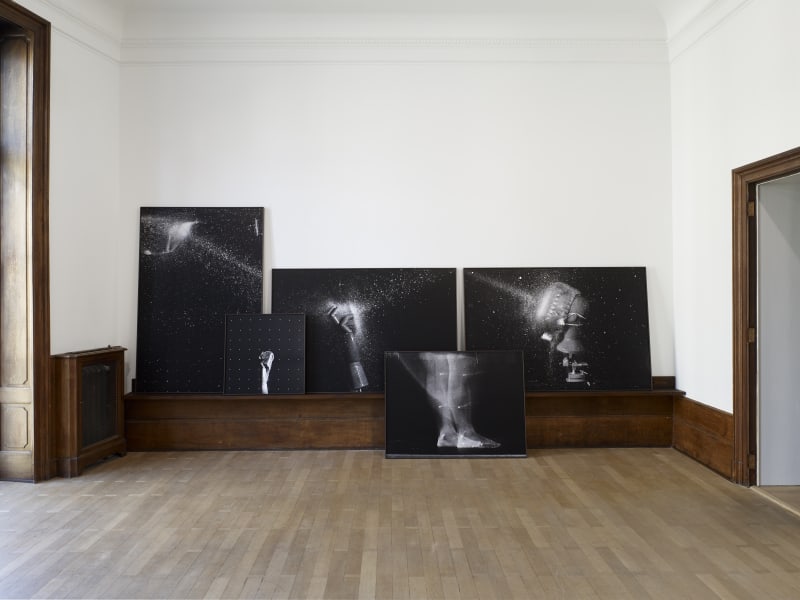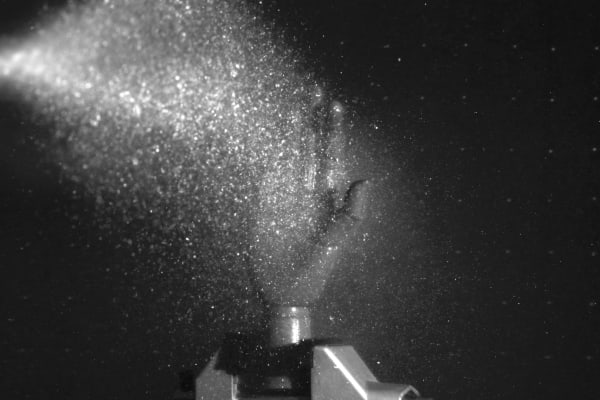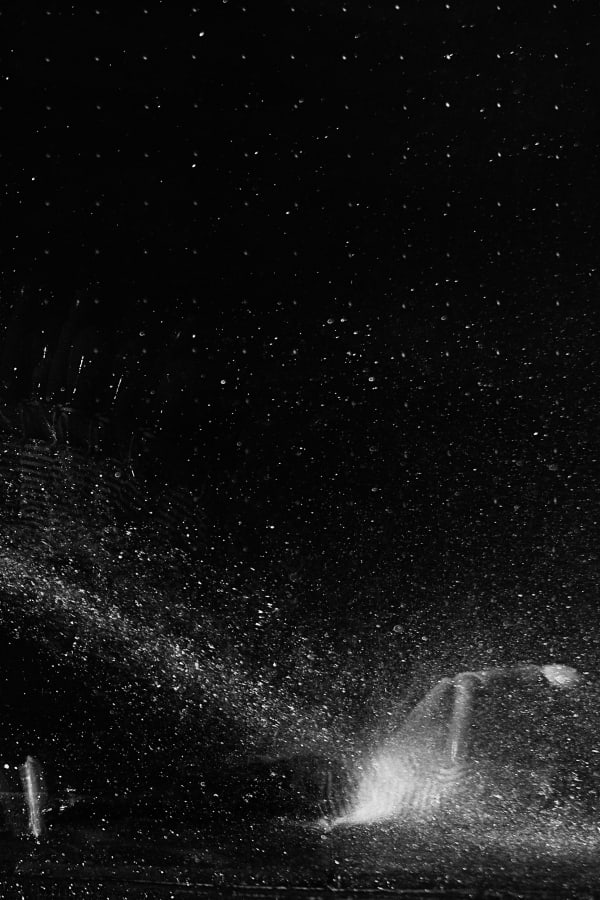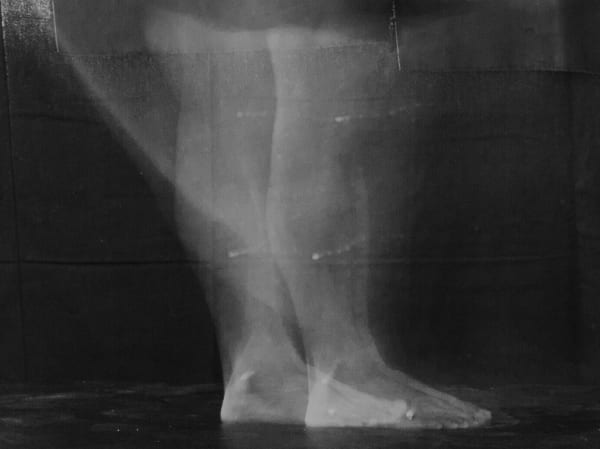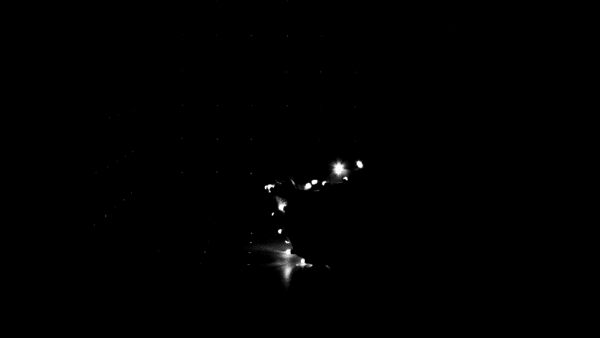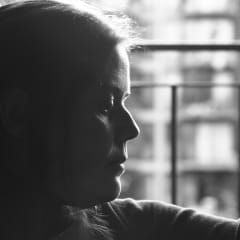Resistance of a Body Letícia Ramos
This work refers to the developments of the Industrial Revolution, a period in which the photograph was used to support scientific theses, improve the “workshop of the world” and expand productive capacity. Then we come to the time of Frederick Winslow Taylor (1856-1915), the American engineer who is known for his studies of the movements of British workers so that they could be improved and repeated. The improvement of machinery was the improvement of men.
In 1916, in the best example of Taylorism, the couple Frank and Lillian Gilbreth published the article “The Effect of Motion Study upon the Workers.” The Gilbreths used photography and animation to study work cycles and find out how to make them shorter and more efficient, reducing fatigue. The Gilbreths enthused “Time and motion studies make any activity interesting.” The workers who participate in the studies will be “more efficient, successful and happy.”
To achieve their objective, the Gilbreths combined studies of work movements, timing, standard work elements (“therbligs”), and chronocyclegraphs – photographs of workers’ movements, traced through a trail of light. The photographs were taken by exposing the photographic plate for the duration of the activity and fixing small lightbulbs to the bodies of the workers, so that their light would register the movement of their limbs.
The chronocyclegraphs were a development of pioneering research by Eadweard Muybridge (1830-1904) and Étienne-Jules Marey (1830-1904). With the appearance of sculptural light spirals, the chronocyclegraphs were curiously in tune with the production of futuristic artists, who also promoted the utopia of man-machine, but did not foresee that scientific positivism could use photography to increase the economic exploitation of the worker.
In A resistência do corpo (Resistance of a Body), Letícia simulates a controlled environment to test the reaction of bodies to what happens during street demonstrations. Cameras, puppets and mannequins mimic the visual repertoire of scientific studies in photos of thrown objects, communication by mobile phones in social networks, and the impact of water jets.
Following the same process as the Gilbreths, Letícia carried out numerous tests. In some images, a head, a bust and a hand caught in something are hit by jets of water, the backlit drops spreading out like the Milky Way. In another image, a doll smashes on the ground, as if it were a living person.
The fragmented bodies, the mechanical devices, the dark background with dots of light, all establish a calculated and mysterious atmosphere, as if we were immersed in a robotic or space experience. The use of photography gives veracity to the work and gives even an unlikely situation a documentary feel when photographed.
Small screens show videos of points of light outlining the motion of a falling body. Why is it falling? Gradually, the work becomes abstract. The image of a message being sent on a cell phone, typed by a hand clothed with a sleeve of balls and photographed with a strobe light, resembles a set of atoms vibrating in space. Another message is sent, registered with a glove dotted with lights and divided into blue images, seeming to show an electric discharge, the same as those that a small Polaroid camera takes. The transparent blue of the images reveals that x-ray plates are being used rather than film – the same plates that medicine uses to investigate the mysteries of the body. Another plate shows a mannequin and a single hand, as if they were making a strange and surreal call for help.
Letícia’s images do not make things clearer. It is possible that the figure throwing the object represents a protester. The person sending the message on the cell phone could be anyone. The water jets could be the responsibility of the police.
How much can a body resist in street demonstrations? Who is interested in these visual representations of impacts? Mannequins and test dummies are frequently used in industry to avoid harming real people, mainly in situations of extreme risk. The videos made by vehicle manufacturers to study the effects of a high velocity impact on bodies are well known. Even though the availability of these images can increase our sense of security, they can also have the opposite effect, diminishing our perception of the risks to which we are subjected, or frightening us through the indirect display of the physical repression to which we are subject.
If we saw the pictures of people affected by car crashes, perhaps we would not support the high velocity industry. Images of weapons and the police, often shown by the authorities to convey a sense of security, also intimidate us. Increases in firepower and more powerful weapons of war have led to an ever-more abstract representation of violence. It is now rare to see photographs from the battle front – they come from drones and satellites.
Indirect representation also dehumanizes, is what the artist appears to say in this dark and disturbing work where photograph is made into a still-life, or almost still.
– Thyago Nogueira, head of Contemporary Photography at Instituto Moreira Salles, Brazil, and editor at ZUM magazine.
English version: Stephen Rimmer
Project developed with the support of Instituto Moreira Salles. Curated by Thyago Nogueira.
Image processing: IMS Photography Team and Letícia Ramos.
-
 Leticia Ramos, Linhas, 2018
Leticia Ramos, Linhas, 2018 -
 Leticia Ramos, Mão III, 2018
Leticia Ramos, Mão III, 2018 -
 Leticia Ramos, Mão, 2017
Leticia Ramos, Mão, 2017 -
 Leticia Ramos, Torax, 2017
Leticia Ramos, Torax, 2017 -
 Leticia Ramos, A queda, 2017
Leticia Ramos, A queda, 2017 -
 Leticia Ramos, Queda, 2017
Leticia Ramos, Queda, 2017 -
 Leticia Ramos, Mão e Pedra, 2017
Leticia Ramos, Mão e Pedra, 2017 -
 Leticia Ramos, Mão e Pedra, 2017
Leticia Ramos, Mão e Pedra, 2017 -
 Leticia Ramos, Base, 2017
Leticia Ramos, Base, 2017 -
 Leticia Ramos, Máscara, 2017
Leticia Ramos, Máscara, 2017 -
 Leticia Ramos, Jato d'água, 2018
Leticia Ramos, Jato d'água, 2018 -
 Leticia Ramos, A Mão é a Mensagem III, 2018
Leticia Ramos, A Mão é a Mensagem III, 2018 -
 Leticia Ramos, Controle, 2018
Leticia Ramos, Controle, 2018 -
 Leticia Ramos, A Mão é a Mensagem II, 2018
Leticia Ramos, A Mão é a Mensagem II, 2018 -
 Leticia Ramos, Gráfico, 2017
Leticia Ramos, Gráfico, 2017 -
 Leticia Ramos, Gráfico, 2017
Leticia Ramos, Gráfico, 2017 -
 Leticia Ramos, Gráfico, 2017
Leticia Ramos, Gráfico, 2017 -
 Leticia Ramos, Gráficos de Luz, 2018
Leticia Ramos, Gráficos de Luz, 2018 -
 Leticia Ramos, Gráficos de Luz V, 2018
Leticia Ramos, Gráficos de Luz V, 2018
